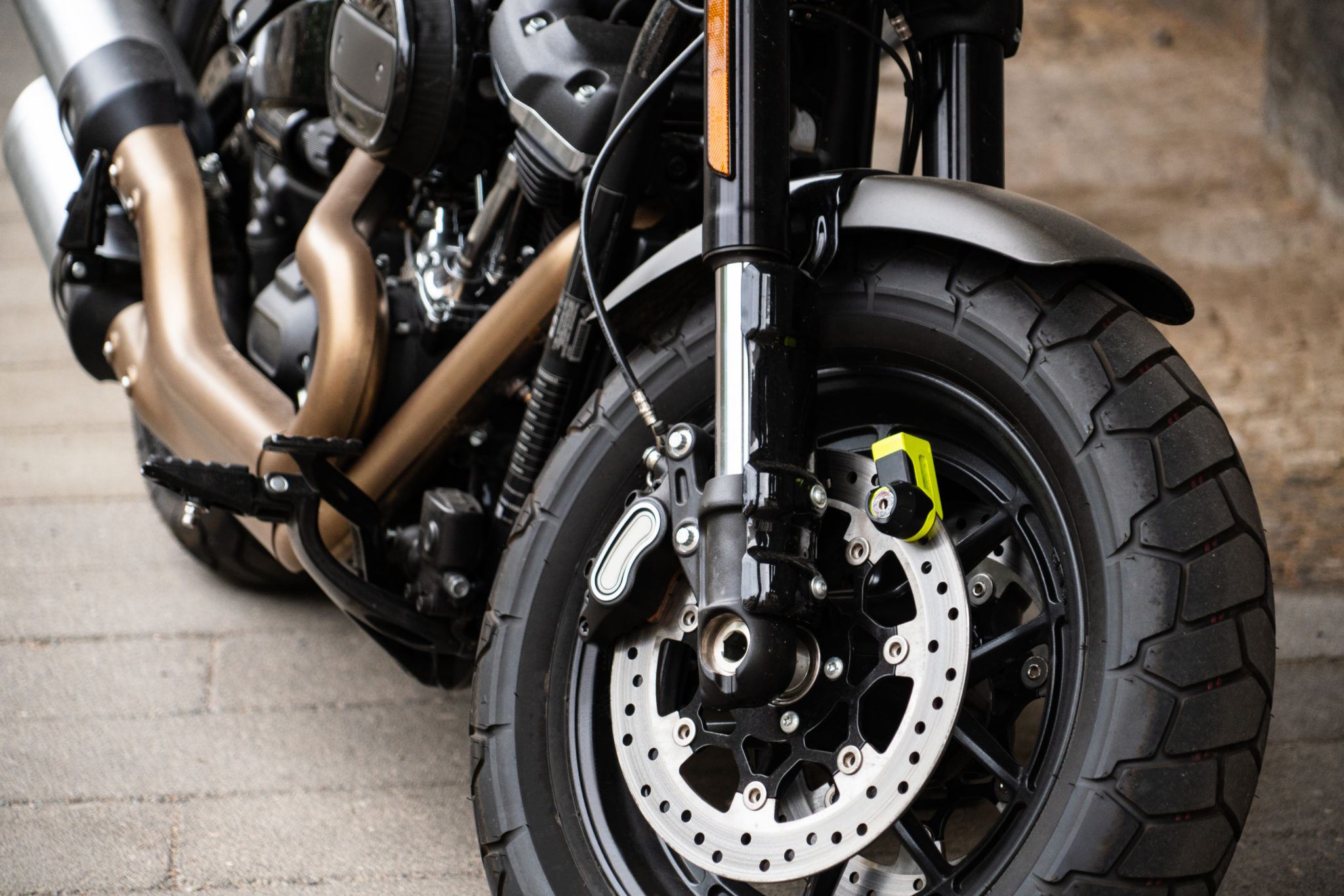Motorcycle Brake Inspection Requirements Virginia and North Carolina
Virginia Brake Inspection
19VAC30-70-340
During inspection, your inspector is required to observe the brake operation (operated by either you or your inspector). Your bikewon’t pass inspection if:
- A brake isn’t equipped, or it’s disconnected
- The OEM service brake system was on both wheels and it has been altered or removed from one or both of the wheels
- There’s no split service brake system or independent actuated brake system on both the front and rear wheels(only required on motorcycles manufactured after July 1, 1974)
- Less than 2/32 of an inch of lining or disc pad is left
- Brake linings are cracked or broken to the point where they don’t align or aren’t firmly attached to the shoe or pad
- Grease or some other contaminant that could compromise braking is present on the lining or pads
- Rivets on the pad are loose or missing
- An attached brake drum or rotor disc is scored to the point where braking would be compromised
- Cotter keys or lock nuts are missing, rods are bent, cables are frayed or parts are misaligned
- Motorcycle can’t stop within 30 feet when traveling at 20 mph on a dry, level surface free of loose material
- Foot or hand levers fail to have at least 1/3 travel reserve after brakes are fully engaged
- There are leaks present in wheel cylinders, master cylinders, brake hose or lines
- Fluid levels in master cylinders are below manufacturer recommended levels
- Hose or lines are installed in such a way that abrasion could occur due to contact with the frame or other components
- There are leaks in any lines
- Hoses are cracked, crimped, restricted or there’s exposed abraded fabric
- Valves leak or don’t work
- Hoses or tubing are stretched to the point where suspension movement isn’t possible

West Virginia Brake Inspection
Chapter 17-C, Article 15, Section 32, Motor Vehicle Law
West Virginianbrake inspection language is nowhere near as a complex as Virginia’s, but there are some similar requirements:
- Brakes have to be equipped and can’t be disconnected
- Rods must not be bent
- Cotter keys or lock nuts can’t be missing
- Brake cables must not be frayed or broken
- Motorcycle must be able to stop within 30 feet at 20 mph or decelerate at a rate of 14 feet per second
- Brake levers must have at least 1/3 travel reserve at full brake application
North Carolina Brake Inspection
19A NCAC 03D .0532
Motorcycles in North Carolina are only required to have one brake, and it can either be a hand or foot brake (GS 20-124(d)). A motorcycle will fail North Carolina’s brake inspection if:
- The brakes don’t provide sufficient force to stop the moving vehicle (a bit vaguer than other states)
- Brakes apply uneven force due to wearing pattern
- There’s a visual or audible indication the lining is worn to the point where it can’t be serviced
- Less than a 1/3 brake lever travel reserve at full brake application
- Brake cylinder reservoirs aren’t full
- Fluid is visibly leaking form brake lines or brake components
- Cables are frayed, broken, frozen or defective
Get Help if You’ve Been Injured in a Motorcycle Accident in Virginia or North Carolina
Our team of lawyers throughout the Mid-Atlantic region are proud advocates for rider rights, and we’re always available for any motorcyclists who have been injured due to another driver’s negligence. If another driver caused an accident and you were injured, please don’t hesitate to call us at(855) 529-7433 fora free case evaluation.